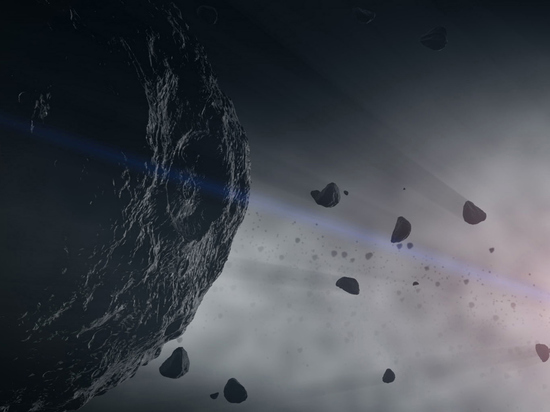NASA is tracking a newly discovered object the size of an Olympic pool
NASA is tracking a recently discovered large asteroid that has a “small chance” of colliding with Earth in 2046.

According to NASA's Planetary Defense Coordination Office, a newly discovered asteroid roughly the size of an Olympic pool has a «small chance» of collide with Earth in 23 years. A potential impact could fall on Valentine's Day in 2046, according to CNN.
According to the European Space Agency, the probability of an asteroid impacting the Earth is 1 in 625, although NASA's Jet Propulsion Laboratory Sentry system calculated the probability of a collision closer to 1 in 560. The latter system keeps track of potential collisions with celestial objects.
But the cosmic body, named 2023 DW, is the only object on NASA's risk list that ranks 1 out of 10 on the Turin Impact Hazard Scale, used to classify an object's predicted risk of impact with Earth. All other objects are rated 0 points on the Turin scale.
While DW 2023 tops the list, its rating of 1 only means that «the likelihood of a collision is highly unlikely and of no public concern or concern» according to the Jet Propulsion Laboratory, while a rating of 0 means that «the likelihood of a collision is zero or so small that it is effectively zero”.
“This object is not of particular concern”,– says Davide Farnocchia, a navigation engineer at the Jet Propulsion Laboratory in Pasadena, California.
NASA officials have warned that the likelihood of a collision could change dramatically as more observations of DW 2023 are collected and more analysis is conducted.
“Often when new objects are discovered for the first time, – noted in NASA Asteroid Watch, – it takes weeks of data collection to reduce uncertainty and adequately predict their orbits for years to come”.
Typically, newly discovered asteroids appear more threatening on first sighting, CNN emphasizes.
«Because the orbits defined by very limited sets of observations are more uncertain, it is more likely that such orbits will «admit» future impacts",– notes on its website at the Jet Propulsion Laboratory's Center for Near-Earth Object Research.
Most of the time, the threat associated with a particular object will decrease as additional observations become available.
“However, such early predictions can often be ruled out as we include more observations and reduce the uncertainty in the object's orbit, – the center said in a statement. – More often than not, the threat associated with a particular object will decrease as more surveillance becomes available”.
It could be several days before new data can be collected due to the asteroid's proximity to the moon, Farnokchia said in an email to CNN. The last full moon was two days ago, and it still appears bright and large in the sky, probably hiding 2023 DW from direct observation, he stressed.
“But then the object would remain visible for weeks (even months with large telescopes) so that we can get as many observations as needed”,– added the expert.
According to NASA, the asteroid measures about 50 meters in diameter. Since 2023 DW orbits the Sun, it has 10 predicted approaches to the Earth, with the closest one being February 14, 2046, and nine others – between 2047 and 2054.
The space rock was first seen in our skies on February 2nd. It travels at about 25 kilometers per second.
Farnokchia cited the success of NASA's DART mission, or double asteroid redirection test, in September 2022 as evidence that humanity may be ready to confront space objects on potentially catastrophic courses . "DART" deliberately pushed the spacecraft into an asteroid to change its trajectory.

